Since July 2014, international crude oil prices have fallen from a high of more than 100 US dollars per barrel to less than 50 US dollars per barrel, and the downward pressure is huge. In contrast, domestic natural gas prices are “soundingâ€. Since September 1, 2014, the National Development and Reform Commission has once again raised the price of non-residential gas, which is 0.4 yuan per cubic meter. In the market context of “oil dropâ€, the sales of natural gas commercial vehicles in the downstream market have also been affected. The choice of diesel or gas models has become a problem that some users need to reconsider. Here, the editors of this journal analyzed the reasons for the slowdown in the growth of natural gas commercial vehicle sales in 2014 and the market trend in 2015.
Affected by political and economic factors, domestic refined oil prices continued to fall. With almost no warning, in 2014, international oil prices fell by nearly 50% in just half a year, from US$107 per barrel in the middle of the year to the end of the year. Less than $60 per barrel. In 2015, this decline has not stopped showing signs. From the first trading day, the decline in international oil prices continued. As of the close of January 13, the light crude oil futures for February 2015 delivery on the New York Mercantile Exchange closed at $45.89 a barrel, while the London Brent crude oil futures price closed at $46.59 a barrel. Although investors' bargain hunting has caused a strong rebound in international oil prices on January 14, the price is still below $50 a barrel.
Regarding the reasons for the continued and sharp decline in international oil prices, an analysis that has been widely spread is a political factor. However, relying solely on remediation factors clearly underestimates the complexity of the matter. It is reported that among the various factors that caused this round of international oil price decline, the lack of global oil demand is the first cause. Since the international financial crisis in 2008, the global economy has not been able to get rid of downward pressure. The demand of developed countries is sluggish, and the economic development of developing countries including emerging market economies is decelerating. From the perspective of global international crude oil supply and demand, the weak demand and the increase in supply, especially Saudi Arabia's attitude and practice of resolutely reducing production, make oil demand less prosperous. Second, the strength of the dollar has intensified the downward pressure on oil prices. Oil is denominated and settled in US dollars on the international market. In 2014, as the US economy continued to recover, and the economic growth in Europe and Japan slowed down or even stagnated, the US dollar appreciated sharply against multiple currencies, and the price of oil denominated in US dollars fell. As for whether oil prices will pick up in 2015, expert analysis depends on whether the global economy continues to improve. Only strong demand can force oil prices to rebound, and on the other hand, whether the dollar will continue to strengthen. If it continues to strengthen, The oil price will continue to fall.
As a result of the continued decline in international oil prices, from July 2014, domestic refined oil prices experienced an “eleven-day losing streak†within six months. Among them, the last price adjustment on December 26, 2014, the decline has set a new record since the implementation of China's refined oil pricing mechanism. Take the No. 0 diesel price in Beijing as an example. On July 7, 2014, it was 7.94 yuan/liter, and on December 31, 2014, it fell to 5.9 yuan/liter. At 24:00 on January 12, domestic refined oil prices started with the “12 consecutive losses†in 2015.
The contradiction between supply and demand is prominent, and domestic natural gas prices will continue to rise. However, in sharp contrast, China’s natural gas prices have been rising while oil prices have fallen sharply. The data show that from 2006 to 2013, the average price of natural gas sales in the provinces across the country increased by about 7.5% annually. In 2014, China once again raised the price of natural gas. Since September 1, 2014, the price of non-residential gas has increased by 0.4 yuan per cubic meter, an increase of about 16%. According to the plan of the National Development and Reform Commission, the "third step" of China's natural gas price reform "three steps" will be completed by the end of 2015. From the past price changes, this means that natural gas prices will rise. For the reason of the increase in domestic gas prices, experts analyzed that this is mainly due to the lack of domestic natural gas resources, and domestic natural gas production can no longer meet the demand. This contradiction between supply and demand is prominent, and gas shortages have occurred in some areas. Therefore, in terms of resource conservation, gas prices must be raised.
“Oil rises†has forced the cost advantage to be absent. The growth rate of natural gas commercial vehicle sales has slowed down in recent two or three years. The fundamental reason for the rapid growth of China’s natural gas commercial vehicle sales is its low cost of use. Taking heavy trucks as an example, although the price of natural gas heavy trucks is 80,000 to 100,000 yuan more than that of ordinary diesel heavy trucks, its fuel cost is 30% to 40% lower than that of diesel vehicles. It also makes many heavy truck users still have a soft spot for natural gas vehicles. . However, since 2014, including the sharp drop in oil prices and the continuous rise in natural gas prices, the advantages of natural gas commercial vehicles have been gradually eroded. Especially the sales of natural gas trucks represented by heavy trucks are deteriorating and have not reached market expectations.
For the reason that the growth rate of natural gas heavy truck sales is slowing down, industry experts have analyzed that the economic advantage between natural gas heavy trucks and diesel models has been further narrowed except for “oil dropâ€, and many users have chosen to continue to wait and see attitudes. In the current domestic economic situation. The sluggish domestic economy in 2014 caused the entire heavy truck industry to be in a state of decline, and natural gas vehicles were naturally affected. In addition, with the end of the promotion of natural gas commercial vehicle activities by car companies, users can not purchase natural gas vehicles at a discounted price with low down payment or even zero down payment, which also led to a gradual slowdown in sales of natural gas commercial vehicles in 2014. At the same time, the construction of natural gas supporting construction in various regions is slower, and there is room for growth in areas with sufficient gas supply and low gas prices. The potential is obviously not as good as the sales of natural gas commercial vehicles in the country in the past few years. In addition to the above factors, post-maintenance and parts supply also restrict natural gas development. On the one hand, heavy trucks often travel to and from all parts of the country. In case of sudden failures, they need to be solved in time. However, the current natural gas maintenance technology has not been popularized, so that the use of natural gas heavy trucks in the country is not very important. On the other hand, due to the influence of market holdings, natural gas vehicles are used. The mass production of gas cylinders, engines and other parts is small, and the production and manufacturing costs are high, which leads to a decline in the competitiveness of the vehicle market. This also restricts the popularity of LNG heavy trucks nationwide to a certain extent.
Good factors still exist in 2015, and sales of natural gas commercial vehicles are also expected to improve as described above, although “oil gas rise†is eroding the cost advantage of natural gas commercial vehicles, and there are data indicating that this trend is difficult to change in 2015, but Based on this judgment, the sales volume of China's natural gas commercial vehicles will inevitably shrink further in 2015, and even the current year-on-year decline is not entirely true. After all, there are some positive factors in China's natural gas commercial vehicle market in 2015.
First, since January 1, 2015, China's fully implemented National IV emission standards have increased the cost of diesel heavy truck purchase by nearly 30,000 yuan, which has also narrowed the cost advantage of buying a car between diesel heavy trucks and natural gas heavy trucks. The users are no longer holding a wait-and-see attitude for natural gas heavy trucks. Secondly, the state provides special funds for energy-saving and emission reduction for users who purchase natural gas commercial vehicles, and more local governments will join the subsidies in the future and will also sell for natural gas vehicles. Promotion plays a major role. Taking Shanxi Province as an example, the “Shanxi Province's “Several Policy Measures to Accelerate the Development and Promotion of New Energy Vehicle Industry†issued in November 2014 has included gas trucks in the scope of subsidies. Among them, the subsidy standard for 2015 is 10,000 yuan per vehicle for gas heavy trucks and 2,000 yuan per vehicle for gas light (micro) cards, and the subsidy standards for 2016 and 2017 are halved. At the same time, from January 1, 2015 to December 31, 2017, Shanxi will levy a halfway on the highway tolls for the gas heavy trucks in the province. Third, and most importantly, the continued decline in oil prices may affect domestic gas prices. According to China's natural gas price reform program, natural gas prices are determined by reference to alternative energy costs, equivalent to 90% of the sum of 60% fuel oil price and 40% LPG price. In other words, if the international oil price continues to fall, China's natural gas prices may rise, not rise or even fall.
Experts suggest that the introduction of a guiding policy, but also need to establish a natural gas market price mechanism. Although the development of natural gas commercial vehicles in 2014 did not meet market expectations, but the presence of favorable factors in 2015 also allowed some natural gas vehicles to see development opportunities. It was learned from the Shaanxi Automobile 2015 Annual Meeting of Commercial Vehicles that the company’s natural gas trucks sold 14,000 vehicles in 2014 and planned to sell 22,000 vehicles in 2015. The focus on coal and dangerous goods transportation customers will further expand the advantages of natural gas heavy trucks. .
For the development of natural gas commercial vehicles, experts also put forward a number of recommendations. First, the state needs to introduce guiding policies, including supporting facilities construction policies, increase publicity and support, and let users know, understand and trust natural gas vehicles. Secondly, energy companies must also increase the construction of supporting facilities so that natural gas commercial vehicles can be easily and quickly refueled. Third, natural gas heavy-duty truck enterprises urgently need to break through the manufacturing technology problems. To compensate for the weak function of natural gas single fuel under certain working conditions, capable engine enterprises should also introduce dual-fuel engines to further solve product reliability and dynamic problems. . Fourth, establish a natural gas market price mechanism as soon as possible, and merge the current domestic gas volume with the price of incremental gas to ensure the stability of natural gas prices for vehicles.
Wire Rope Tightener/Wire Grip Puller
Application
Wire Rope Tightener/Wire Grip Puller is used for tensioning cable line in line-construction. It is widely used in electricity,shipbuilding,transportation,construction,mining,telecommunication,sectors equipment installation and the lifting and pulling of small items.
It is particularly more superior in small workplaces or field operations, high altitude operations and the different angles traction.
Character:
The main body is made of the high intensity alloy steel, the chain is made of special high intensity alloy steel .
It has these characteristics in the aspect of design and usage, such as convenient to use, safe and reliable, compact structure, attractive appearance, simple to maintain, durable, high efficiency, small volume ,light weight and convenient to carry and so on.
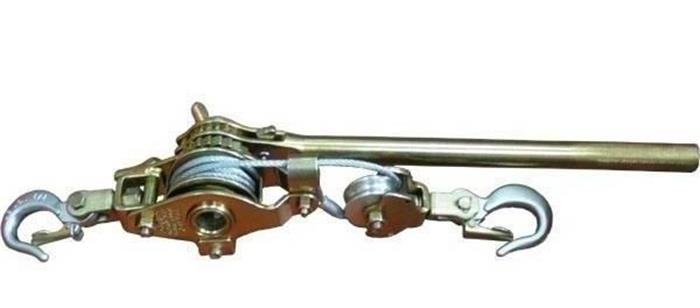
Specifications:
|
Model |
HRP10 |
HRP15 |
HRP20 |
|
Capacity (kg) |
1000 |
1500 |
2000 |
|
Maximum lift(mm) |
1210 |
1400 |
1400 |
|
Distance between hooks(mm) |
410 |
480 |
480 |
|
Wire rope dia (mm) |
5 |
5 |
6 |
|
Wire rope length (mm) |
2300 |
2300 |
2300 |
|
Net weight(kg) |
3.2 |
4.2 |
4.3 |
|
Package(cm) |
43x12x8.5/pcs 45.5x39.5x19.5/6pcs |
48x12.5x9/pcs 50.5x42x21/6pcs |
48x12.5x9/pcs 50.5x42x21/6pcs |
Pictures
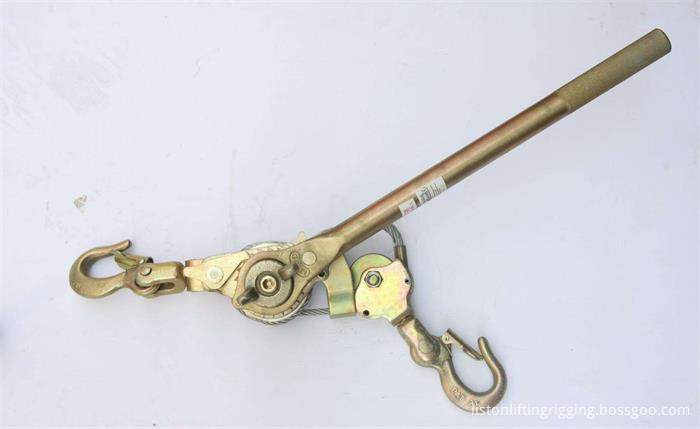
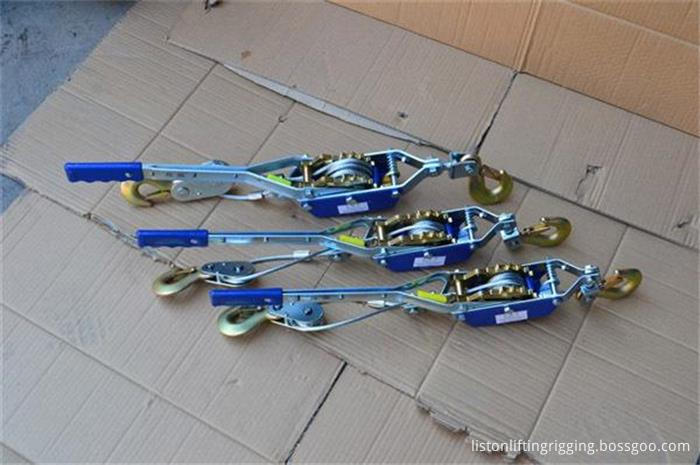

Other Models:
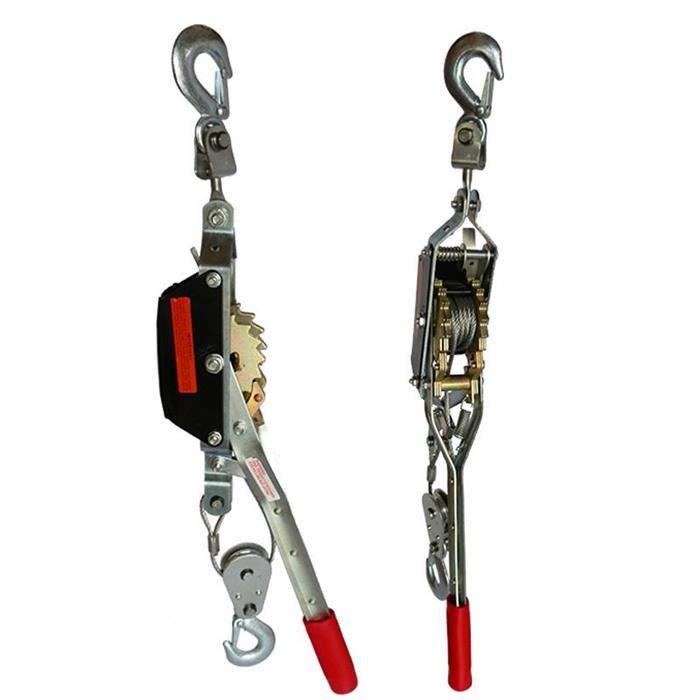
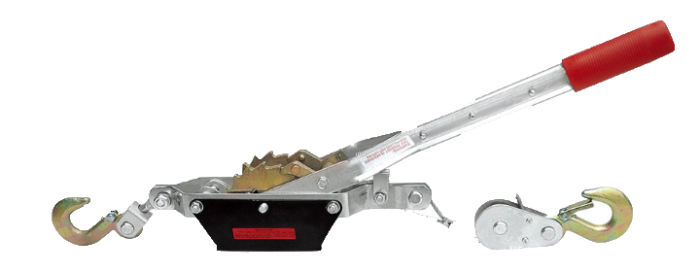
Introduction
Light weight, small volume and compact conformation
Can stand wear and tear as well as corrosion resistant
Difficult to skid, protect the surface of the goods
Convenient to operate under light labour force
Our Services
1.Client
We treasure and try to understand all the different needs of our clients and seek to forge a long term professional relationship with them. The satisfaction of each and every customer is our main goal and motivation in conducting our business.
2. People
We work as a team and treat each other with respect. Our solid, capable and knowledgeable team is valued as the greatest asset and an integral part of the business.
3. Product
Our products are of HIGH quality standards and always come with certificate of compliance by the manufacturers.
4. Performance
We aim to achieve high level of performance and satisfaction to both our client and people, which include delivering high quality services and treating people with integrity.
5. Free sample and OEM service
We can provide free samples to you and we also have OEM service, we can put your logo on the label and the information you need on the webbing too.
Wire Rope Puller,Wire Rope Tightener,Wire Tie Tightener,Wire Cable Tightener
Hebei Liston Lifting Rigging Manufacturing Co., Ltd. , https://www.liftingriggingfactory.com